A Complete Guide to Growing Flowers at Home
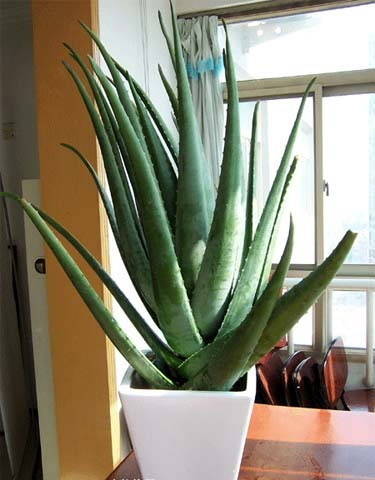
1. Aloe vera can beautify and purify the air. Evergreen aloe vera has a certain odor absorption effect and the effect lasts for a long time.
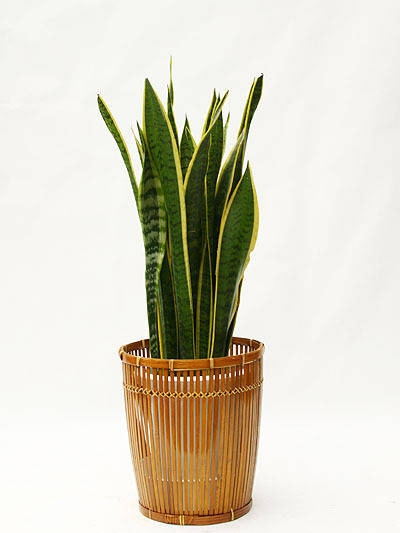
2. Tiger tail orchid is a natural scavenger that can remove harmful substances in the air.
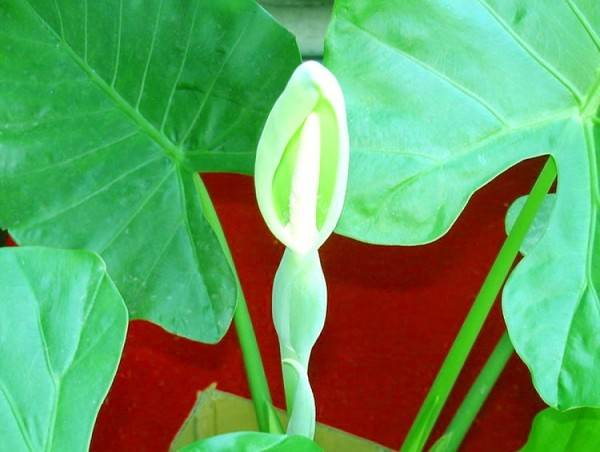
3. Dripping Guanyin has the effect of removing dust from the air.
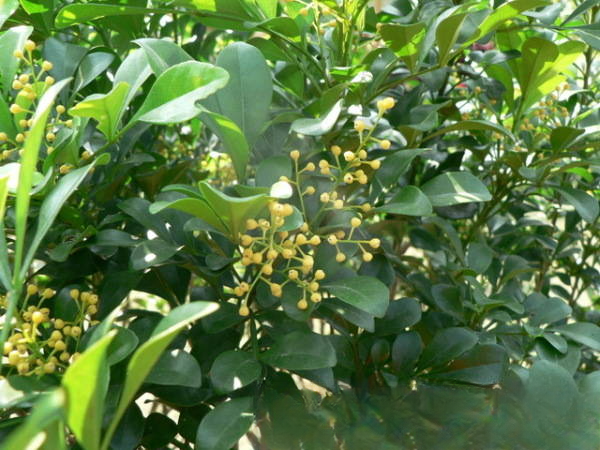
4. Milan is a natural scavenger that can remove harmful substances in the air. It has a light fragrance and is full of elegance.
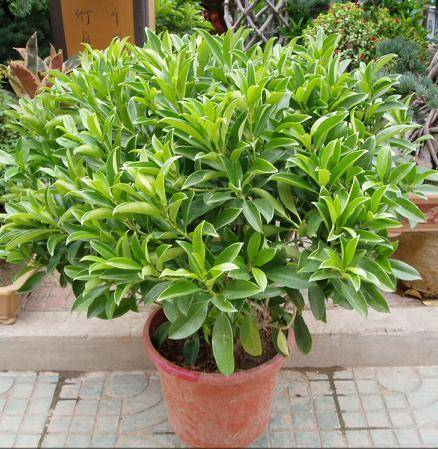
5. The volatile oils produced by African jasmine have a significant bactericidal effect. It can relax people, help sleep, and improve work efficiency
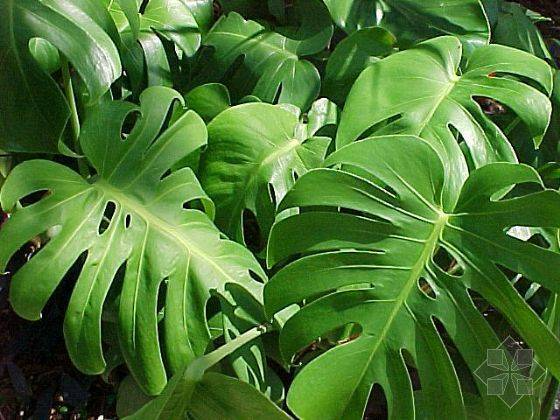
. 6. Monstera is a natural scavenger that can remove harmful substances in the air.
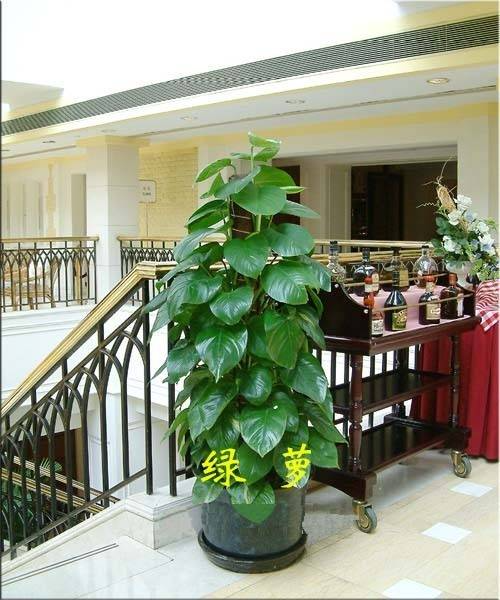
7. The "high-efficiency air purifier" among the organisms, green radish, originated in the Mexican plateau. Because it can purify benzene, trichloroethylene and formaldehyde in the air at the same time, it is very suitable for placement in newly renovated rooms. The newly laid floor is just one of the sources of harmful substances.
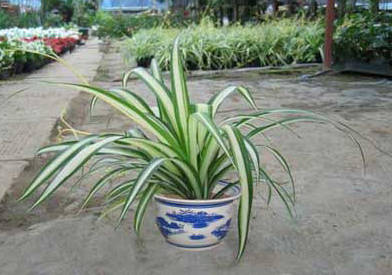
8. Golden heart spider plant can remove harmful substances in the air and purify the air.
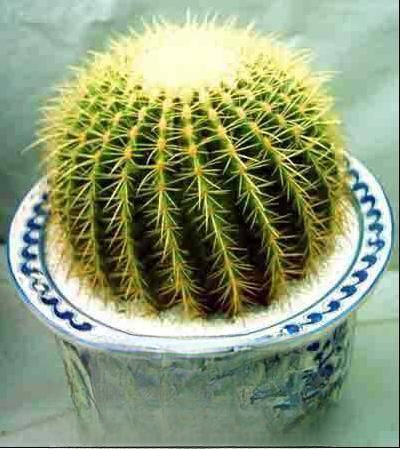
9. Golden amber absorbs carbon dioxide and releases oxygen day and night. And it is easy to survive.

10. Chlorophytum comosum is not picky about soil and light. It has a strong ability to absorb toxic gases and is known as the "green purifier".

11. Dracaena fasciata Dracaena fasciata, also known as the fragrant dragon blood tree, can remove harmful substances from the air.

12. Areca palm, its green palm leaves have a very effective purification effect on xylene and formaldehyde.

13. Osmanthus fragrans can remove harmful substances from the air. The volatile oils produced have a significant bactericidal effect.

14. The money tree releases oxygen and absorbs carbon dioxide; it is suitable for warm, humid and well-ventilated environments, likes the sun and tolerates the shade, and is easy to manage and maintain.

15. Dracaena fasciata absorbs carbon dioxide and releases oxygen day and night. And it is easy to survive.

16. Ivy can effectively resist carcinogens in nicotine. Through the tiny pores on the leaves, it absorbs harmful substances and converts them into harmless sugars and amino acids.

17. White palm is an "expert" in inhibiting waste gases exhaled by the human body, such as ammonia and acetone. At the same time, it can also filter benzene, trichloroethylene and formaldehyde in the air. Its high evaporation rate can prevent the nasal mucosa from drying out, greatly reducing the possibility of illness.

18. Silver Queen is known for its unique air purification ability: the higher the concentration of pollutants in the air, the more it can exert its purification ability! Therefore, it is very suitable for dark rooms with poor ventilation.

19. The maidenhair fern can absorb about 20 micrograms of formaldehyde per hour, so it is considered the most effective biological "purifier". People who deal with paints and coatings all day, or those who like to smoke around them, should put at least one pot of fern in the workplace. In addition, it can also inhibit the release of xylene and toluene from computer monitors and printers.

20. Schefflera brings fresh air to smoking families. The leaves can absorb nicotine and other harmful substances from the smoky air and convert them into harmless plant-specific substances through photosynthesis. In addition, it can reduce the formaldehyde concentration by about 9 mg per day.

21. The leaves and roots of the millennium wood can absorb xylene, toluene, trichloroethylene, benzene and formaldehyde, and decompose them into non-toxic substances .

22. Golden Pothos Golden Pothos can "work" in environments that other indoor plants cannot adapt to. Through a process similar to photosynthesis, it can decompose toxic substances released from fabrics, walls and smoke into substances that the plant itself possesses.

23. The leaves and roots of the fig tree can absorb xylene, toluene, trichloroethylene, benzene and formaldehyde, and decompose them into non-toxic substances.
Types of flowers:
The fragrance of roses, carnations, lily of the valley, violets, roses, osmanthus and other plants has a significant inhibitory effect on the growth and reproduction of tuberculosis bacteria, pneumococci and staphylococci.
Succulent plants such as cacti, which are native to tropical arid areas, have stomata on their fleshy stems that are closed during the day and open at night. While absorbing carbon dioxide, they produce oxygen, increasing the concentration of negative ions in the indoor air. Plants
such as tiger lilies, tiger tail orchids, agaves, brown hair palms, Kalanchoe, sedum, ground roots, and cultivated pineapples can also purify the air at night. Plant
climbing plants such as creepers, grapes, morning glories, wisteria, and roses around your home, and let them climb along the wall or along the frame to form a green pergola, which can effectively reduce sunlight radiation and greatly reduce indoor temperature.
Plants such as lilac, jasmine, roses, violets, and mint can make people relax, feel happy, help sleep, and improve work efficiency.
Flowers should mainly play the role of beautifying the environment. Good flowers are those that have both visual enjoyment and can purify the air. Different places should actually place different flowers. Some flowers are not suitable for indoor use, otherwise they will cause air pollution.
Common flower aroma effects
Rose fragrance: relaxes nerves, relieves physical and mental fatigue, and helps treat nervous system diseases.
Tulip: can relieve eye fatigue and eliminate irritability.
Orchid fragrance: relieves lung heat and phlegm cough, which is good for people with neurasthenia, but it should not be too strong, otherwise it will also cause dizziness.
White orchid fragrance: can kill bacteria and purify the air.
Chrysanthemum fragrance: can clear away heat and wind, clear the liver and improve eyesight, and can be used as an auxiliary treatment for headaches.
Clove: has obvious air purification ability and strong bactericidal ability. Placing clove indoors can prevent infectious diseases to a certain extent, but its fragrance is strong and should not be smelled too much, otherwise it will feel dizzy.
Narcissus fragrance: can make people feel peaceful and warm.
Cleverly placing flowers in the hall can prevent diseases. Three types of plants are suitable for indoor placement.
Experts point out that when growing flowers indoors, some flowers that can absorb toxic gases, purify the air or kill bacteria should be selected. Some flowers themselves have disease prevention and treatment effects. For example, chrysanthemum, wintersweet, etc. have the ability to absorb sulfur, hydrogen fluoride, etc., thyme, clove, etc. secrete volatile oils that can kill bacteria, jasmine, Milan, osmanthus, crape myrtle, Chinese rose, rose, etc., can emit volatile oils with bactericidal effects, beauty coke, honeysuckle, etc. have a strong absorption effect on fluorine, etc.
It is not suitable to grow flowers in wards and bedrooms at night .
Many flowers have the function of purifying the air and promoting health, but if some flowers are kept at home, they will become a source of disease, or a "killer" that causes the recurrence of old diseases and aggravation of old diseases. Therefore, experts recommend that you must understand the nature of flowers before growing them to prevent the body from getting sick after growing flowers.
Patients should not grow potted flowers indoors - because the soil in the flower pots will produce fungal spores, when they spread into the air, they are easy to invade the skin, respiratory tract, external auditory canal, meninges and brain, etc., and cause infection, which is very harmful to patients who already have diseases.
It is not suitable to put flowers in the bedroom at night - because most flowers absorb carbon dioxide and release oxygen through photosynthesis during the day, but at night, it is just the opposite. Therefore, it is best not to put flowers in the bedroom. Flowers placed during the day should be moved outdoors at night, at least not in the bedroom to avoid affecting people's health.
Too strong flower fragrance can hurt the body. Flowers that should not be placed in the room should not be ignored.
Medical experts have conducted experiments and tests, and the results show that people who often smell the fragrance of flowers can have a certain impact on their emotions and health. Chemical experts believe that the fragrance emitted by flowers is composed of dozens of volatile compounds, including aromatic esters, alcohols, aldehydes, ketones and other substances. These substances can stimulate people's respiratory center, thereby promoting the body's respiratory function. If you breathe in a fragrance that is beneficial to the human body, it can make the brain get enough oxygen, regulate the human nervous system, promote blood circulation, and make energy, thinking and body vitality reach a very high level. "Flower therapy" and "aromatherapy" are derived from this.
Experts point out that the fragrance of flowers can cure diseases and maintain health, but it can also cause diseases and harm the body. If the smell of flowers in the air is too strong, the relatively reduced oxygen content will stimulate people to over-ventilate, reduce the oxygen content in the blood, and cause headaches, dizziness, nausea and other symptoms. Some people with allergic constitutions will experience allergic asthma and allergic rhinitis when stimulated by some pollens. For example, orchids can help relieve hot coughs and may also have a stimulating effect. Excessive smell of orchids can make people too excited and dizzy; lily fragrance can make people excited, but if it lasts too long, they will feel dizzy and may also cause insomnia.
Common sense of family flower
cultivation 1. Three things to keep flowers in the room
1. It is advisable to grow flowers with strong drug absorption ability. Some flowers can absorb a certain concentration of toxic gases in the air, such as sulfur dioxide, nitrogen oxides, hydrogen fluoride, formaldehyde, hydrogen chloride, etc. According to research, wintersweets can absorb mercury vapor; pomegranate plants can absorb lead vapor in the air; snapdragons, cannas, morning glory, gladiolus, dianthus, etc. can convert highly toxic sulfur dioxide into non-toxic or low-toxic sulfate compounds through oxidation through their leaves; daffodils, mirabilis jalapa, chrysanthemums, saxifrage, etc. can convert nitrogen oxides into proteins in plant cells; spider plants, aloe vera, and tiger tail plants can absorb a large amount of indoor formaldehyde and other pollutants, eliminating and preventing indoor air pollution.
2. It is advisable to raise flowers that can secrete bactericides. The bactericides secreted by flowers such as jasmine, lilac, honeysuckle, and morning glory can kill certain bacteria in the air, inhibit the occurrence of diphtheria, tuberculosis, dysentery pathogens and typhoid bacteria, and keep indoor air clean and hygienic.
3. It is advisable to raise flowers with "complementary" functions. Most flowers mainly carry out photosynthesis during the day, absorb carbon dioxide, and release oxygen. At night, they breathe, absorb oxygen, and release carbon dioxide. Cacti are just the opposite, releasing carbon dioxide during the day and absorbing carbon dioxide and releasing oxygen at night. Keeping flowers with "complementary" functions in one room can not only benefit both of them, but also balance the indoor oxygen and carbon dioxide content and keep the indoor air fresh.
2. Three taboos for indoor flower cultivation
1. Avoid raising too many flowers with strong fragrance and irritating odor. For example, orchids, roses, roses, lilies, tuberoses, etc. can all emit strong fragrance. A pot in the room is full of fragrance, but if there are too many fragrant flowers in the room and the fragrance is too strong, it will cause people's nerves to become excited, especially if people smell it for a long time in the bedroom, it will cause insomnia. The gas emitted by Christmas flowers and evergreens is not good for people; the particles emitted by tulips and hydrangeas will cause skin allergies and itching if they are in contact for too long.
2. Avoid placing too many flowers. Most flowers will release carbon dioxide and absorb oxygen at night to compete with people. However, most rooms are closed at night, and the air is not circulated enough with the outside world. If there are too many flowers in the room, the concentration of indoor oxygen at night will be reduced, affecting the quality of sleep at night, such as chest tightness and frequent nightmares.
3. Avoid placing toxic flowers in the room. For example, the stems, leaves and even flowers of oleander are poisonous in spring, summer and autumn. The milky white juice it secretes contains oleandrin, which can cause poisoning if eaten by mistake. The bulbs of daffodils contain latin toxins, which can cause vomiting and other symptoms if eaten by children. The juice of leaves and flowers can cause redness and swelling of the skin. If the juice gets into the eyes by mistake, it can cause eye damage. Excessive contact with mimosa can easily cause sparse eyebrows, yellowing of hair, and even hair loss in severe cases.
Therefore, we should understand the relevant scientific knowledge when growing and appreciating flowers to bring health and happiness to ourselves and our families.
3. The "Six Commandments" of Family Flower
Growing Family flower growing is becoming more and more common, but many flower lovers do not know how to grow flowers, so that they are lifeless and dull. What is the problem?
First, be careful. Flowers, like people, are living things and need careful care.
Many flower growers lack the proper care and diligence in dealing with these beautiful lives. First, they are lazy and don't like to delve into flower-growing knowledge. They are willing to be laymen for a long time and manage flowers improperly. Second, they are lazy and don't want to spend too much time and energy on flowers. After the flowers enter the house, they are left out, suffer from hunger and thirst for a long time, and suffer from diseases and insect pests. In this way, even the best flowers will gradually wither. So lazy people can't grow flowers well.
Second, be careful of excessive love. Contrary to the above situation, some flower growers love flowers too much and feel itchy when they don't fiddle with them for a while. Some water and fertilize without any rules, and water them whenever they remember, causing the flowers to die from excessive waterlogging and fertilizer; some move the flower pots around casually, and can move them to several places a day, so that the flowers have to adapt to the environment frequently, disrupting the normal growth law. It would be strange if the flowers don't die in the long run. There are a few pots of flowers that you like at home. It is understandable that you like them. However, flowers, like people, have their own growth rules. If you frequently disturb them when they need to rest, they will naturally feel tired and grow poorly.
Third, avoid pursuing fame and fortune. Some flower lovers believe that flower cultivation must be famous flowers, because famous flowers have high ornamental value and high market profits. Under this psychological control, they spare no expense to buy famous flowers and trees everywhere. As a result, due to the lack of good maintenance conditions and management techniques, the flowers die soon after they are bought, which not only spoils the precious flowers, but also wastes money. This is a conceptual misunderstanding. The correct approach should be to start with ordinary and lower-grade varieties and gradually explore the rules and techniques of flower cultivation. After reaching a certain technical level, gradually purchase more precious varieties, so that the chance of success will be greater.
Fourth, avoid not distinguishing between weeds and weeds. Some flower growers are greedy for perfection and move home any variety they see. This not only makes management difficult, but also brings some flowers that are not suitable for cultivation into the home, polluting the environment and damaging health. For example, flowers with poisonous juices can easily cause poisoning if people come into contact with them. The smell of some flowers affects the human nervous system, which can easily cause breathing problems or even allergic reactions. Plants with sharp thorns on the outside also pose a certain threat to human safety, and so on. In short, it is not advisable to be greedy for big and complete flowers at home, and not to distinguish between weeds and scurvy. You should choose some species with smaller plant shapes, beautiful appearances, and harmless to the human body.
Five precepts: Some flower growers are impatient and have no theme in flower growing. The flowers in their homes are changed like a revolving lantern. This is a taboo in flower growing. First, the species are changed too quickly, and the planting time is short, which is not conducive to cultivating flowers and trees with beautiful plant shapes and high ornamental value. Second, if you try every flower briefly, it is not conducive to improving the level of flower growing, and you will still be a flower blind in the end. Therefore, flower growers can only gain something if they choose one or two kinds of flowers and focus on studying and cultivating them.
The concept of the six precepts is not new.
In today's flower-growing industry, new knowledge and new technologies emerge in an endless stream, but most flower growers still stick to traditional maintenance methods. In terms of the use of flower containers, water and fertilizer management, and seedling cultivation, they are not good at using new technologies and new equipment, such as soilless cultivation, odorless flower fertilizers, and various flower containers. As a result, home flower cultivation is unhygienic, unsightly, unnovel, and has significant side effects.
1. The benefits of flower cultivation
. Flowers, with their gorgeous style, decorate nature with extraordinary beauty and give people a beautiful enjoyment. Flower cultivation can enrich and adjust people's cultural life, add fun, cultivate temperament, and improve health; it can also increase scientific knowledge and improve cultural and artistic literacy. Flower cultivation can green and beautify the earth, protect and improve the environment, purify the air, and enable people to work and study in a beautiful environment, making life better. Flower cultivation is not only for viewing, but also has many important economic values. Flowers are an important part of Chinese herbal medicine. Honeysuckle, chrysanthemum, wintersweet, hibiscus, azalea, rose, lotus, etc. are all common Chinese herbal medicines. Fragrant flowers are widely used in food and light industry. For example, osmanthus can be used as food spices and wine making, jasmine, white orchid, daidai, pearl orchid, etc. can be smoked tea, chrysanthemum can be used to make high-end food and dishes, white orchid, jasmine, rose, wintersweet, daffodil, etc. can be used to extract essence.
2. The knowledge of buying flowers
Don't buy the following kinds of flowers
1. Flowers that have just been potted If you see that there is new soil in the pot when buying flowers, and the stems move when you pull them up, then the flowers in this pot must have just been potted and have not grown new roots. Such flowers are easy to die after they are bought back. The reason is that some business owners, in order to pursue economic benefits, directly mix organic fertilizers that have not yet been decomposed into the soil. Once these fertilizers are fermented, the roots of the flowers will be burned. Sometimes, in order to save labor or rush time, they plant the flower roots without any arrangement, and even hastily pot the flowers and trees that are too damaged and cannot survive and put them on the market. If you accidentally buy such flowers, most of them will be difficult to survive.
2. Planting two or more flowers together Some business operators take advantage of the fact that buyers like lush flowers and leaves, and plant two or more undesirable flower seedlings together in a pot, selling inferior flowers to inexperienced buyers and making a profit. The branches and leaves of this kind of flowers will become thinner, weaker, and yellower day by day, and the flowers will become smaller and smaller. The reason is that the flowers are not nutritious, and there are too many roots in the pot, which is easy to harden. It may also rot and die due to poor drainage and poor ventilation. Of course, special combination pots are not included. Flowers without soil balls in summer or winter, in hot summer, the temperature is very high, the leaves of flowers and trees evaporate quickly, and the roots of newly potted flowers and trees are more or less damaged, making it difficult to absorb water from the pot soil in a short period of time. Only with the original soil ball can it safely
pass through this transition period, otherwise it will first wilt and then slowly die. In winter, the weather is cold, and flowers and trees grow slowly. Some flowers and trees even enter a dormant state. At this time, if you buy flowers and trees without soil balls from the market and bring them home, they may suffer frost damage (especially the root system) after being potted and watered. In the mildest case, the growth of the plants will be hindered, and in the worst case, the plants will die. Even if they are not frozen, it is difficult for flowers and trees to grow new roots due to the low soil temperature, and the old roots cannot germinate for a long time and are very easy to rot and die. Particular attention should be paid to areas without heating in winter such as the Yangtze River Basin.
3. Flowers with roots but no stems and
leaves Some individual vendors go up the mountain in autumn and winter to dig wild vines and miscellaneous tree roots and pretend to sell them as flowers and trees. Because they have no stems and leaves, it is difficult to identify them. In order to keep them moist, they wrap them with moss and give them some strange flower names to deceive inexperienced buyers. Some people are greedy for cheapness, but after buying them, nine out of ten will only grow leaves but not bloom.
4. Flowers that can bloom in various colors in the picture.
In order to make a profit, a few illegal vendors put fake flowers of various colors on some plants that cannot bloom, and then take pictures to make pictures, and give them some foreign flower names to deceive friends who are just starting to grow flowers. These flower vendors who set up stalls move from place to place, and it is difficult for deceived buyers to find them.
5. Flowers and trees that use thin wires to tie branches and leaves into various shapes. In order to sell them at a good price, flower and tree operators intentionally tie all the branches and leaves of evergreen trees such as pine and cypress into various animal shapes with thin wires, and then take them to the market as bonsai and sell them at high prices. This kind of potted flower looks good at the time, but over time, as the plant grows, the shape will change. Moreover, tying all the branches and leaves of the plant at the same time not only affects photosynthesis, but also easily produces diseases and pests, which is very detrimental to the growth of the plant.
6. Cactus flowers with small frost spots on the stems or bulbs. In early spring, individual vendors are often seen selling cactus flowers at low prices. Some buyers do not examine carefully and buy ten or eight plants at a time, and many of them have problems. The reason is that the cactus that overwinter is very easy to be slightly frostbitten. Light green frost spots smaller than rice grains appear on the stems and bulbs. There is no problem on the surface, but in fact the internal tissues of the plant have been severely damaged. If no measures are taken after buying such flowers, the spots will become larger and larger, the plant will gradually become translucent, and finally the whole plant will die.
3. Spring maintenance of family potted flowers
A year's plan begins in spring. The management and maintenance of family potted flowers in spring is very important. The following three aspects should be done well.
1. Breed good seedlings. Roses, geraniums, pomegranates, winter jasmine, etc. can be cut into strong branches for cuttings in spring. Azaleas and jasmine like acidic soil. You can cut 5-10 cm thick new branches, remove the lower leaves, and keep 3-4 top leaves for cuttings. Cuttings can be propagated in black mountain mud, vermiculite or yellow sand. Spray the cuttings moderately to maintain a certain humidity. Generally, they will take root after about 1 month. Orchids, agaves and spider plants can be propagated by division or creeping branches in early spring.
Spring-sown herbaceous plants sown with seeds, such as asparagus fern, colorful peppers, mimosa, impatiens, safflower, morning glory, and cosmos, can be sown or spot-sown. Sowing method: first fill the pot with soil, press it slightly, then sow the seeds, and then cover with fine soil. After sowing, water the flower pot in a basin of water and let the water slowly seep in from the bottom of the pot. Most of them will germinate 1-3 weeks after sowing. After germination, move the pot to a sunny place. After the seedlings grow 2-3 leaves, they can be divided and transplanted. Be careful not to damage the roots and break the stems when transplanting.
2. Repot and change the soil. This is a method of fertilizing potted flowers in spring. Generally, small pots are turned over once a year, large pots are turned over once every 3-4 years, and tall plants need to be repotted. Some plants with densely grown roots or with dead or rotten roots need to be properly pruned. After repotting, the first watering should be thoroughly poured, and then placed in a cool place. Water again when the pot soil is dry. Generally, normal watering should be carried out after new roots grow, and the plants should be moved to a sunny place.
3. Pruning. It should be done according to different plants. Rhododendrons and winter jasmines should not be over-pruned. Pomegranates, roses, etc. can have dead branches, injured branches, or branches that grow too densely cut off in early spring to promote luxuriant flowers and leaves. When repotting jasmine, remove old leaves to promote the sprouting of more new branches. Climbing plants such as creepers, wood fragrance, wisteria, and roses can be pruned so that the leaves are exposed to sunlight as much as possible and grow vigorously. Be careful not to move potted flowers outdoors too early in early spring to avoid being attacked by cold air and being frozen. Watering can be increased as the temperature rises, and the dry and wet levels should be balanced.
4. Summer maintenance of potted flowers at home
1. Watering Flowers are lush and luxuriant in summer, and consume a lot of water. Therefore, flowers should be watered every morning and evening in summer.
2. Build a frame for shade All potted flowers must be built with a frame in summer and put on a reed curtain for shade, so that they can safely survive the hot summer.
3. Pay attention to ventilation of indoor flowers. When the temperature exceeds 30~C, pay attention to ventilation, open the windows, let fresh air flow into the room, prevent heatstroke and cool down.
4. Moisturizing and cooling
In summer, you can cover the pot soil with some grass to prevent the sun from directly shining on the pot soil, thereby reducing the temperature of the pot soil and preventing the moisture in the pot soil from evaporating too quickly; you can also use a sprayer to wet the leaves of the flowers, and sprinkle the surroundings with moisture to lower the temperature and increase the humidity. This is very beneficial for some flowers that like coolness.
5. Autumn maintenance of family potted flowers
1. Strengthen water and fertilizer management After the beginning of autumn, the weather gradually turns cooler. For some foliage flowers, such as asparagus, spider plant, cycad, etc., thin liquid fertilizer is generally applied every half a month to keep the leaves green and improve the ability to resist cold; for chrysanthemums, camellias, azaleas, etc. that bloom once a year, liquid fertilizer mainly composed of phosphorus fertilizer should be applied in time to ensure sufficient nutrients so that they bloom more and larger; for roses, Milan, jasmine, etc. that bloom multiple times a year, sufficient fertilizer and water should be supplied to keep them blooming; for some fruit-viewing flowers, such as kumquat, bergamot, pomegranate, etc., thin liquid fertilizer mainly composed of phosphorus fertilizer should be applied 1-2 times. As the temperature gradually decreases, except for the autumn-sown grass flowers that bloom in autumn and winter or early spring, the number of watering should be reduced for other flowers, and the pot soil should not be dried before watering, so as to avoid excessive water and fertilizer, resulting in excessive growth of branches and leaves, affecting the differentiation of flower buds and freezing damage.
2. Timely sowing and planting in autumn In autumn
, mature flower and tree seeds should be harvested in time, and tulips, gloxinia, snapdragons, etc. should be sown in time. In particular, seeds that are easy to lose germination power should be sown in time in autumn, combined with pruning and cuttings of flowers and trees. For example, cuttings of roses, roses, and roses have a higher survival rate.
6. Winter maintenance of family potted flowers
Different types of flowers have different growth habits, and different management measures should be taken to ensure their safe wintering.
1. Wintering of deciduous woody flowers: Most deciduous woody flowers are native to temperate regions. Common ones include pomegranates, honeysuckle, roses, peach blossoms, and winter jasmine. They are generally dormant in winter. Therefore, the room temperature can be controlled at around 5°C. If there is a balcony or a small courtyard, potted roses, peach blossoms, pomegranates, honeysuckle, etc. that are more cold-resistant can be placed in the back of the balcony or in the corner of the courtyard, wrapped and covered with plastic film, and they can be safely wintered.
2. Overwintering of evergreen woody flowers: such as oleander, kumquat, osmanthus, etc., which are in a semi-dormant state, the temperature is generally controlled above 0℃, and they can safely survive the severe winter. Milan, jasmine, hibiscus, gardenia, etc. should be placed in a place with sufficient sunlight. The indoor temperature should be kept at around 15℃. If the temperature is too low, the flowers will die.
3. Overwintering of one- and two-year herbaceous flowers: such as four-season primrose, coleus, and cattail flower, the room temperature is kept between 5℃ and 15℃, and they can grow normally. For perennial herbaceous flowers such as asparagus, impatiens, geranium, and begonia, they can grow well by keeping sufficient sunlight and room temperature at 10℃ to 20℃. For herbaceous flowers such as Clivia and Oncidium that are dormant in winter, maintain a room temperature of about 5℃ and give appropriate light. The light should not exceed 8-10 hours a day. At the same time, strengthen fertilizer and water management, and they will bloom in two months.
VII. Several flower-growing tips
1. How to judge whether potted flowers are lacking water
(1) Knocking method: Use the knuckles of your fingers to gently knock on the upper middle wall of the flower pot. If a relatively crisp sound is heard, it means that the soil in the pot is dry and needs to be watered immediately; if a dull sound is heard, it means that the soil in the pot is moist and you can temporarily stop watering.
(2) Visual inspection method: Use your eyes to observe whether the color of the surface of the pot soil changes. If the color becomes lighter or light grayish white, it means that the soil in the pot is dry and needs to be watered; if the color becomes darker or dark brown, it means that the soil in the pot is moist and you can temporarily stop watering.
(3) Finger test method: Gently insert your finger into the soil about 2 cm deep and touch the soil. If it feels dry or rough and hard, it means that the soil in the pot is dry and needs to be watered immediately; if it feels slightly moist, delicate and soft, it means that the soil in the pot is moist and you can temporarily stop watering.
(4) Pinching and twisting method: Twist the soil with your fingers. If the soil becomes powdery, it means that the soil is dry and water should be applied immediately. If the soil becomes flaky or granular, it means that the soil is wet and water can be temporarily withheld. The above methods are all based on experience and can only tell people the general situation of the soil dryness or wetness. If you need to know the exact degree of dryness or wetness of the soil, you can install a soil moisture meter and insert the moisture meter into the soil. You can see the words "dry" or "wet" on the scale, and you can know exactly when to water.